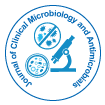

Olufunmilayo Olukemi Akapo
Tremellomycetes, a fungal class in the subphylum Agaricomycotina, contain well-known opportunistic and emerging human pathogens. The azole drug fluconazole, used in the treatment of diseases caused by some species of Tremellomycetes, inhibits cytochrome P450 monooxygenase CYP51, an enzyme that converts lanosterol into an essential component of the fungal cell membrane ergosterol. Studies indicate that mutations and over-expression of CYP51 in species of Tremellomycetes are one of the reasons for fluconazole resistance. Moreover, the novel drug, VT-1129, that is in the pipeline is reported to exert its effect by binding and inhibiting CYP51. Despite the importance of P450s, the P450 repertoire in species of Tremellomycetes has not been reported to date. This study intends to address this research gap. Comprehensive genome-wide P450 analysis revealed the presence of 203 P450s (excluding 16 pseudo-P450s) in 23 species of Tremellomycetes that can be grouped into 38 P450 families and 72 P450 subfamilies. Twenty-three P450 families are new and three P450 families (CYP5139, CYP51 and CYP61) were conserved across 23 species of Tremellomycetes. Pathogenic cryptococcal species have 50% fewer P450 genes than non-pathogenic species. The results of this study will serve as reference for future annotation and characterization of P450s in species of Tremellomycetes.